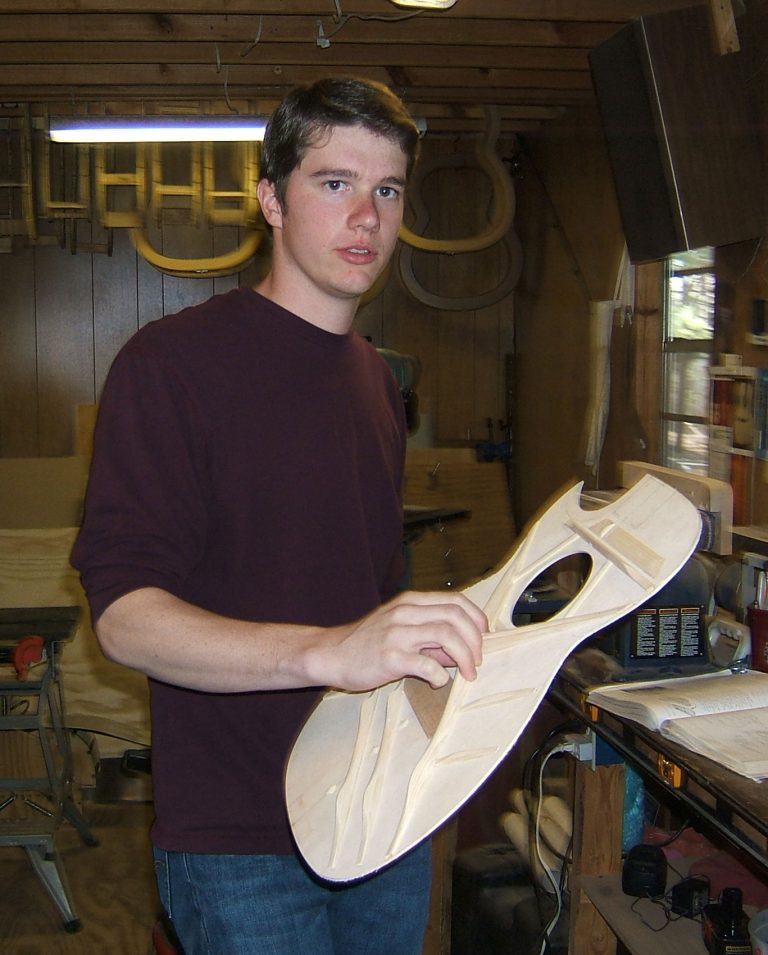Colby Horton has always loved music and finds building fine guitars very satisfying. He lives in Tiplersville, a tiny town in far northern Mississippi. He was born in nearby Ripley, where his father (whose family is from this immediate area) has a small veterinary hospital. His mother also helps out at the clinic now that the four kids are grown. There’s a bit of musical activity on his father’s side of the family. His dad bought a guitar when Colby was 8, then let Colby take lessons starting at the age of 11 (in 1997). He studied finger-style guitar for about five years until his teacher retired. When Colby was a teenager, he started thinking seriously about what to do with his life. He was sure he wanted the guitar involved, but ruled out performance, and looked more closely at building guitars. He was intrigued to learn on the internet that there were still plenty of luthiers that built fine instruments by hand and that some of them were able to make full-time careers out of this.
Colby began making guitars in 2002. He invested in a minimal array of tools—a few saws, planes and chisels, plus a small router, small bandsaw, and a bending iron—and got some books and some wood and fitted out his bedroom as his first shop. His first guitar took about a year to build. He remembers it as an exciting but slow process, impeded by the usual learning curve and by needing to put in hours at his father’s animal clinic. The hardest task was bending the sides; he broke the first set, and soon upgraded from a bending iron to a bending machine with a heated element. His final product was admittedly pretty rough, but he was proud of it and has kept going since. Each guitar has been better than the one before, he believes, with dramatic improvements at first. The second guitar still had sides and a finish that were a little rough, and the third a truss rod that rattled subtly, but soon the finished guitars were at a high level. His first sale was on eBay, which has remained a source of both direct sales and commissions.
Colby now has a tidy, fully-outfitted two-story shop behind his parents’ house. His guitars sell well online—he maintains an impressive website and through fine guitar stores in Nashville and elsewhere. He uses traditional materials, with more guitars made relying on the ubiquitous combinations of Sitka spruce tops with either Indian rosewood or mahogany bodies than on more exotic choices. He builds in his own versions of standard shapes, from the smaller OM and 000 sizes through various types of jumbo and the bluegrass standard, the dreadnought (though he favors the less common slope-shouldered type of dreadnought). He aims for instruments with lots of volume, good output and response, nice balance from string to string, a deep bass and bright trebles, and good sustain, what he calls “the basic package you want in a good-sounding guitar.”

